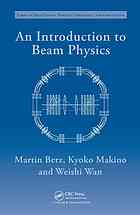

Most ebook files are in PDF format, so you can easily read them using various software such as Foxit Reader or directly on the Google Chrome browser.
Some ebook files are released by publishers in other formats such as .awz, .mobi, .epub, .fb2, etc. You may need to install specific software to read these formats on mobile/PC, such as Calibre.
Please read the tutorial at this link: https://ebookbell.com/faq
We offer FREE conversion to the popular formats you request; however, this may take some time. Therefore, right after payment, please email us, and we will try to provide the service as quickly as possible.
For some exceptional file formats or broken links (if any), please refrain from opening any disputes. Instead, email us first, and we will try to assist within a maximum of 6 hours.
EbookBell Team

4.0
16 reviews"Preface It has been 8 years since we started this book project, which originated from the lecture note of a graduate level course taught by my coauthors at Michigan State University. Compared to the lecture note, the present book is more than twice as long, which is the result of a few contributing factors. The obvious reason is the requirement that a book has to be more self contained than a lecture note. The more important reason is that, over the past decade, the field saw significant development in a few areas and new materials have been added to reflect the change. A couple of examples are an overview of the development of aberration-corrected electron microscopes and the treatment of the chicane bunch compressor. The last reason is more pesonal in nature. Over the past decades, the field of beam physics have become so diverse that each area has developed it's own way of treating the problem and communications among different areas have been problematic. It's been our belief that modern map method is a good tool to reunite this divese field and that this book offers the best platform to realize this goal. On one hand, we cover as widely as possible the topics in different areas of the field of beam physics, ranging from electron telescopes, spectrometers to particle accelerators. On the other hand, we attempt to present traditionally more advanced topics, such as the resonances in circular accelerators, in an introductroy book using modern map method, hence avoiding the elegant but more involved Hamiltonian formalism. The result is a book that requires no prior knowledge of beam physics and only basic understanding of college level classical machenics, calculus and ordinary differential equations"--